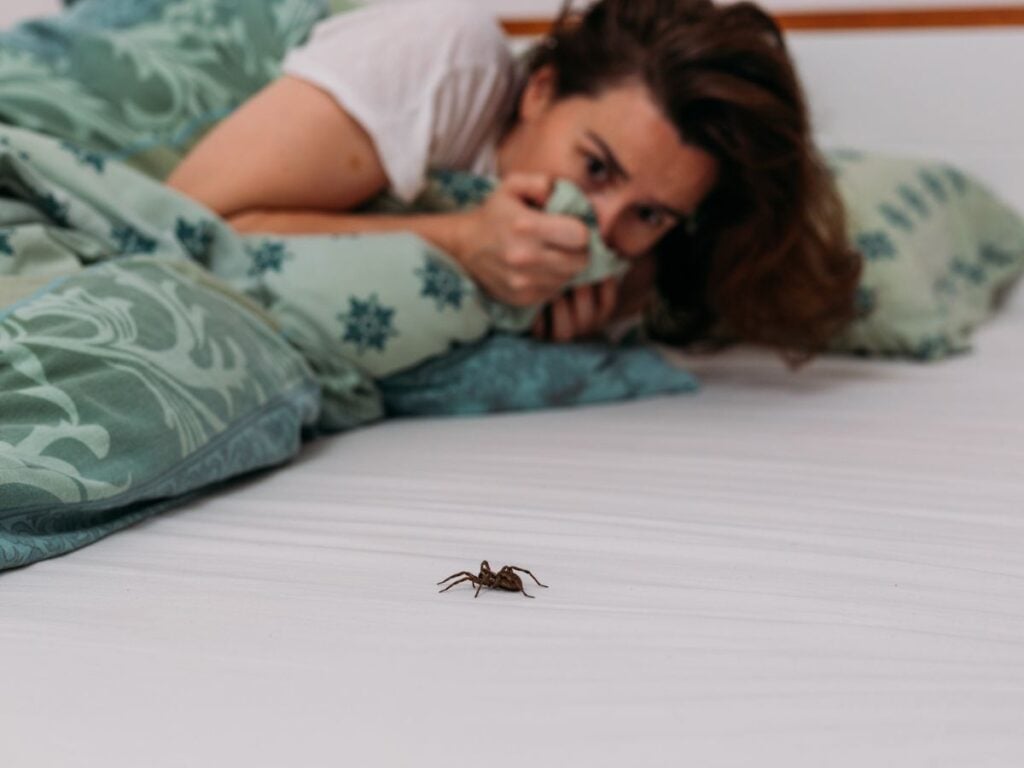
If you are like me, you don't tolerate bugs or household pests. I will immediately squash any critter that enters my home. Cockroaches? No. Spiders? No! These creatures should not be allowed to live rent-free in my home.
However, it turned out that I may be too obsessed with my bug-killing efforts. While some unwanted insects can be a nuisance, the following five pests are actually beneficial to keep around your home. Next time you squash, think twice.
1. Daddy-Longlegs
This bug, whatever you call it (the official name of the species is Pholcus.phalangioides), actually serves a purpose. They are creepy looking, but they serve a purpose.
These tiny, leggy insects are carnivores. They love to eat other spiders such as redbacks and black widows. They even eat spider eggs. They also enjoy eating insects such as mosquitoes, which love your blood, and aphids, which love your plants.
They also enjoy eating dead insects and bird poop so they can help you keep your outdoor spaces clean. Although they can sometimes gather in large groups during fall, it is usually temporary and won't cause structural damage.
HOLIDAY SHOPING: Sending Holiday Gifts Your Loved One Will Always Remember
2. Centipedes
These tiny arthropods can be found everywhere, even in areas with high moisture levels. They are most likely to be found in damp basements, laundry rooms, and bathrooms. These creatures, whose name means "100 legs", look like something from a horror film.
Although they will give you the heebies every now and again, centipedes are not a significant threat to your health or property.
You should not kill them as they provide free pest control by hunting small arthropods and other arthropods hiding in your home. An increase in centipedes could be due to an increase in their food supply. This could indicate a larger pest problem in your house.
3. Ladybugs
Ladybugs are adorable with their red hard shells, black spots and short legs. They are a symbol of good fortune in many cultures and their adorable appearance is reason enough to not kill them.
Ladybugs are incredibly helpful in fighting off pests like mealybugs and aphids.
Ladybugs have one thing in common: don't allow their numbers to grow. This is when they can be a problem and they will also emit a foul smell when they are bothered. Gross.
HOLIDAY SHOPING: Target Wrinkles and Sun Spots With This Innovative Laser Treatment That's Designed To Deliver In-Office Results At Your Home
4. Praying Mantis
Praying mantises are instantly recognizable by their small green bodies, triangular heads, and large front legs. They make a great companion for those who pray.
A praying mantis is a pest-eater and trapper. They are attracted to flies, moths and mosquitoes. They can also lay eggs indoors. These little guys can be caught gently and taken outside to combat mosquitoes.
5. Spiders
This is the worst thing I can say for those who are as allergic to spiders as I am. However, having spiders indoors is a good idea. Natural predators spiders will actively target and eat other pests including those that could carry diseases. Out of the thousands of species, only 30 spiders are venomous, which is roughly 1/20th of 1%.
Many people are opposed to spiders living in our homes. If possible, take the spider out of your home and let it go outside so it can continue its work in a more distant area than where you sleep.
-
This wearable device doesn't track your health, it actively helps improve it by reducing stress signals in the body
-
This product is a must-have for anyone with sensitive skin.
-
Get the ultimate holiday gift: a custom painting to capture your loved one's most precious memories
-----------------------------------
By: Perry Carpenter
Title: Before You Kill That Pesky Bug, Make Sure It’s Not One Of These 5 Useful Insects
Sourced From: www.suggest.com/helpful-bugs-for-your-home/2692021/
Published Date: Mon, 28 Nov 2022 14:15:00 +0000
Read More
Did you miss our previous article...
https://thegossip.news/hollywood/this-acnefighting-skin-ingredient-also-helps-reduce-the-appearance-of-fine-lines-and-promotes-collagen-growth
.png) SportsFashionPoliticsVideosHollywoodPrivacy PolicyTerms And Conditions
SportsFashionPoliticsVideosHollywoodPrivacy PolicyTerms And Conditions
